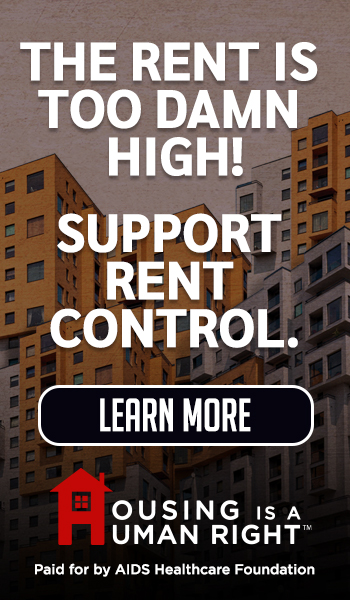Comments
SPORTS IMPACT IN LA - Sports have long served as more than just a source of entertainment in Los Angeles; they have acted as an engine of change, steering the city through transformative urban development. From economic booms driven by global events to infrastructural rejuvenation fueled by sports complexes, the impact of athletic institutions and events has rippled across neighborhoods and industries alike. This article unpacks the powerful influence of sports on Los Angeles’ urban landscape, integrating all relevant data and names to paint a complete picture of the city’s evolution.
Economic Impact of the Sports Industry
In 2023 alone, the sports industry in the Los Angeles Basin generated approximately $11.7 billion in economic output, cementing its role as a foundational pillar of the region’s economy. This staggering figure supported around 83,880 jobs, emphasizing the industry's ability to create employment opportunities across various sectors, from hospitality to media production. Moreover, the industry contributed a significant $704.8 million in state and local taxes, directly bolstering public services and infrastructure funding throughout the city. These numbers demonstrate not just financial growth, but the systemic integration of sports into Los Angeles’ fiscal health.
L.A. Live Complex – Urban Entertainment Redefined
The L.A. Live complex, a hallmark of downtown Los Angeles’ transformation, is a striking testament to sports’ role in reshaping the urban core. Spearheaded by Anschutz Entertainment Group (AEG), this development features sports arenas, entertainment venues, luxury residences, and public gathering spaces. It has effectively revitalized what was once a struggling area, drawing both tourists and locals into a vibrant urban hub. The presence of the Staples Center (now Crypto.com Arena) and various event-hosting capabilities has turned L.A. Live into a year-round economic driver, proving that sports-focused development can spark widespread urban renewal.
Job Creation and Tax Revenues
The 83,880 jobs supported by the Los Angeles sports sector span across transportation, retail, marketing, event management, security, and food services, making it a comprehensive employment generator. But the impact does not stop at employment. With $704.8 million generated in state and local taxes, the sports industry feeds crucial public services and municipal improvements. These funds are essential for sustaining infrastructure, enhancing transportation networks, and supporting community initiatives, demonstrating how deeply sports are interwoven with civic progress.
LA Strong Sports – Community Resilience Through Recreation
LA Strong Sports has become a beacon for community resilience in areas affected by natural disasters. This initiative focuses on reconstructing and improving sports and recreational facilities across neighborhoods that have suffered environmental damage. By investing in youth development, mental health support, and community engagement through physical activity, LA Strong Sports fosters both emotional recovery and physical well-being. The organization’s mission encapsulates how sports extend beyond stadiums into the heart of Los Angeles’ communities, nurturing long-term social development.
The Role of Los Angeles Sports Council
The Los Angeles Sports Council plays a crucial role in quantifying and communicating the regional impact of the sports industry. By commissioning detailed economic reports, the council provides decision-makers with concrete data to advocate for sustainable growth strategies. These reports are instrumental in justifying funding for future sports projects and have contributed to positioning sports as a keystone in urban planning. The Council's efforts not only validate the industry's current success but also forecast its future value, ensuring informed policy creation.
Hosting International Events – The Olympic Legacy
Hosting international sports events, such as the Olympic Games, has been pivotal for Los Angeles. Past Olympic bids brought infrastructural upgrades including public transportation expansions, athletic facility development, and beautification projects. These events placed Los Angeles on the world stage, attracting tourism, investment, and long-term business opportunities. With the 2028 Summer Olympics on the horizon, the city anticipates another surge in development and economic activity, reinforcing sports as a cornerstone of urban evolution.
Public Perception and Gentrification Concerns
Despite the economic and structural advantages, sports-driven urban development in Los Angeles has raised pressing social questions—especially regarding gentrification. Displacement of long-standing residents and shifts in neighborhood identity have sparked debate about who truly benefits from these projects. As new facilities rise and property values increase—often alongside a boom in commercial branding and digital betting promotions, such as partnerships offering a BetMGM bonus code—equitable development becomes a vital issue. Los Angeles now faces the challenge of reconciling its growth ambitions with inclusive housing and community preservation strategies.
AEG’s Broader Urban Impact
Anschutz Entertainment Group (AEG) has been a dominant force in shaping Los Angeles' cityscape. Beyond constructing iconic venues, AEG's vision has extended into creating interconnected urban ecosystems that blend sports with culture, commerce, and community. Their work at L.A. Live exemplifies how private sector leadership, when aligned with public goals, can deliver transformative results. AEG’s commitment to Los Angeles’ development underscores the potential of sports-led initiatives in metropolitan environments.
Sports-Driven Real Estate Development
The synergy between sports facilities and real estate development is evident in Los Angeles’ evolving skyline. Projects surrounding major stadiums often include residential complexes, retail centers, and green spaces, offering a blend of utility and luxury that appeals to a broad demographic. This strategy creates self-sustaining neighborhoods where sports events drive foot traffic and economic activity, while also offering residents a dynamic urban lifestyle. Los Angeles exemplifies how sports can serve as a nucleus for thoughtful, holistic city planning.
Infrastructure Projects Sparked by Sports
Los Angeles’ investment in sports infrastructure has led to improvements in transit accessibility and public amenities. From Metro rail extensions serving stadiums to upgraded pedestrian zones and green belts, these enhancements improve everyday life while preparing the city for major events. These infrastructure projects, although often tied to athletic venues, offer long-term value to all residents. Sports act not only as the trigger for such upgrades but also as the rationale for ensuring inclusive urban mobility and connectivity.
Sports as a Long-Term Urban Strategy
As Los Angeles approaches the 2028 Olympic Games, it is clear that sports are more than an economic boost—they are integral to the city’s long-term vision. The use of existing venues, investment in sustainable infrastructure, and community-based programming suggest that future development will continue to intertwine with athletic enterprise. From youth empowerment to global branding, sports in Los Angeles are poised to remain a core component of strategic urban planning.
Los Angeles has demonstrated that when approached thoughtfully, sports can be a powerful lever for progress. With billions in economic output, community-centered initiatives, and transformative urban developments, the city’s sports legacy goes far beyond the scoreboard. It is built into the skyline, the streets, and the future of its people.
###
















